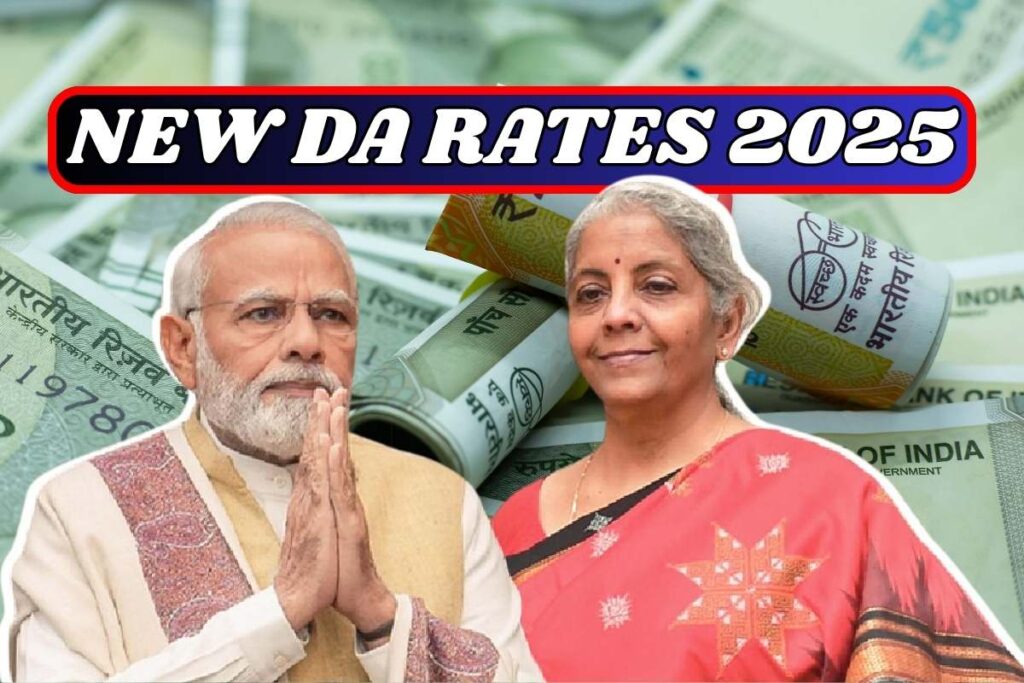It is the Indian Government providing the DA to the Government Employees and the Pensioners and the DA is a part of the Salary and is provided to hedge against inflation. The amount of the DA is reviewed every year twice and this is based on the location of the job. The DA is the changes in the living adjustments provided by the Government to the public sector employees and the pensioners The New DA Rates 2025 have been 55% which was earlier 53% and the adjustments came in effect from 1 January 2025. Latest Changes To DA 2025 have been mentioned here in the post. Now you can collect the basic updates on the new rates through the given post.
New DA Rates 2025
The Dearness Allowance is the cost of living adjustment provided by the Government to the public sector employees along with the ones getting pensions. The Indian Government has been providing the DA to both the current employees and the pensioners and this component of salary is a variable used to hedge against inflation. The DA is being revised every year twice and this has been determined using the basic salary percentage of the Government employee. The DA is related to the cost of living and the Dearness Allowance is not the same for the employees of the urban sector, semi urban sector and the rural sector. The new DA has been effective from 1 January 2025 onwards and the hike in DA has been 2% now.
The new rate of the DA has been 55% which was earlier 53% and the Dearness Relief for the Government pensioners have also been hiked by 2%. The DA is the part of Basic Salary and the increase in the DA is the effort of the Government to support the employees and the pensioners in coping with the rising living cost. The DA is having a change according to the Consumer Price Index. The Latest Changes To DA 2025 are to be checked through the given article. The regular revisions of the DA ensures that real income of Government employees remains stable. Now the complete facts on the new rates are to be checked using the given article.

What Is Dearness Allowance?
The DA is the cost of living adjustment which is provided by the current employees of the public sector along with the pensioners. The DA is the part of the basic salary and effective from 1 January 2025, the new rates of the DA have been 55% which have been hiked by 2%. The DA has been of 2 different types: Industrial and the Variable one. The employees of the urban, semi urban sector or the rural sector are being provided with a different rate of the DA benefits.
DA For Central Government Employees
The Government workers and the pensioners are given DA or the cost of living adjustments. The DA is being computed as the percentage of the basic pay and is being updated on the regular shifts under the Consumer Price Index. In order to get the fact that inflation is not reducing the purchasing power of the public sector employees and the pensioners, the Government is modifying the DA twice every year.
DA Calculation Under 8th Pay Commission
There hasn’t been any confirmed sources which states as to how the DA for the Central Government Employees will be calculated effective from 1 January 2026 and whether it shall continue on the basis of the AICPI for the workers. DA on the basis of 8th Pay Commission is to be calculated on the basis of the recommendations being adopted by the Central Government Employees.
Dearness Allowance New Rate 2025
It has been said that the new rate of the DA has been 55% which was 53% earlier and this rate has been hiked from 1 January 2025 onwards. The DA shall be calculated at the rate of 55% only.
DA Calculation For Central Government Employees
DA% =[ {Average of AICPI (Base Year 2001 which is 100) of the past 12 months – 115.76}/ 115.76] * 100
While the average for the Public Sector Employees is taken to be 126.33
FAQs ON New DA Rates 2025
How much has been the new rate of the DA?
The new rate of the DA has been 55%.
How is the DA Calculated?
The DA% calculator has been mentioned in the post above.
When is the new rate of the DA effective from?
The new rate of the DA is effective from 1 January 2025 onwards.




